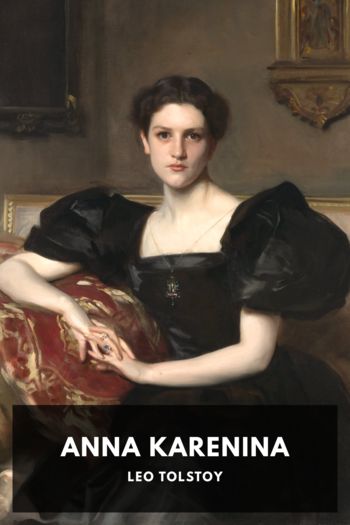What Is Art? Leo Tolstoy (good books to read for 12 year olds TXT) 📖

- Author: Leo Tolstoy
Book online «What Is Art? Leo Tolstoy (good books to read for 12 year olds TXT) 📖». Author Leo Tolstoy
Once again: how is it that often when a new work is produced, neither the critics, the artists, the publishers, nor the public, seem to know whether it is valuable or worthless? Some of the most famous books in English literature could hardly find a publisher, or were savagely derided by leading critics; while other works once acclaimed as masterpieces are now laughed at or utterly forgotten. A play which nobody now reads was once passed off as a newly-discovered masterpiece of Shakespeare’s, and was produced at a leading London theatre. Are the critics playing blind-man’s buff? Are they relying on each other? Is each following his own whim and fancy? Or do they possess a criterion which they never reveal to those outside the profession?
Such are a few of the many problems relating to art which present themselves to us all, and it is the purpose of this book to enable us to reach such a comprehension of art, and of the position art should occupy in our lives, as will enable us to answer such questions.
The task is one of enormous difficulty. Under the cloak of “art,” so much selfish amusement and self-indulgence tries to justify itself, and so many mercenary interests are concerned in preventing the light from shining in upon the subject, that the clamour raised by this book can only be compared to that raised by the silversmiths of Ephesus when they shouted, “Great is Diana of the Ephesians!” for about the space of two hours.
Elaborate theories blocked the path with subtle sophistries or ponderous pseudo-erudition. Merely to master these, and expose them, was by itself a colossal labour, but necessary in order to clear the road for a statement of any fresh view. To have accomplished this work of exposure in a few chapters is a wonderful achievement. To have done it without making the book intolerably dry is more wonderful still. In Chapter III (where a rapid summary of some sixty aesthetic writers is given) even Tolstoy’s powers fail to make the subject interesting, except to the specialist, and he has to plead with his readers “not to be overcome by dullness, but to read these extracts through.”
Among the writers mentioned, English readers miss the names of John Ruskin and William Morris, especially as so much that Tolstoy says, is in accord with their views.
Of Ruskin, Tolstoy has a very high opinion. I have heard him say, “I don’t know why you English make such a fuss about Gladstone—you have a much greater man in Ruskin.” As a stylist, too, Tolstoy speaks of him with high commendation. Ruskin, however, though he has written on art with profound insight, and has said many things with which Tolstoy fully agrees, has, I think, nowhere so systematised and summarised his view that it can be readily quoted in the concise way which has enabled Tolstoy to indicate his points of essential agreement with Home, Véron, and Kant. Even the attempt to summarise Kant’s aesthetic philosophy in a dozen lines will hardly be of much service except to readers who have already some acquaintance with the subject. For those to whom the difference between “subjective” and “objective” perceptions is fresh, a dozen pages would be none too much. And to summarise Ruskin would be perhaps more difficult than to condense Kant.
As to William Morris, we are reminded of his dictum that art is the workman’s expression of joy in his work, by Tolstoy’s “As soon as the author is not producing art for his own satisfaction—does not himself feel what he wishes to express—a resistance immediately springs up” (see here); and again, “In such transmission to others of the feelings that have arisen in him, he (the artist) will find his happiness” (see here). Tolstoy sweeps over a far wider range of thought, but he and Morris are not opposed. Morris was emphasising part of what Tolstoy is implying.
But to return to the difficulties of Tolstoy’s task. There is one, not yet mentioned, lurking in the hearts of most of us. We have enjoyed works of “art.” We have been interested by the information conveyed in a novel, or we have been thrilled by an unexpected “effect”; have admired the exactitude with which real life has been reproduced, or have had our feelings touched by allusions to, or reproductions of, works—old German legends, Greek myths, or Hebrew poetry—which moved us long ago, as they moved generations before us. And we thought all this was “art.” Not clearly understanding what art is, and wherein its importance lies, we were not only attached to these things, but attributed importance to them, calling them “artistic” and “beautiful,” without well knowing what we meant by those words.
But here is a book that obliges us to clear our minds. It challenges us to define “art” and “beauty,” and to say why we consider these things, that pleased us, to be specially important. And as to beauty, we find that the definition given by aesthetic writers amounts merely to this, that “Beauty is a kind of pleasure received by us, not having personal advantage for its object.” But it follows from this, that “beauty” is a matter of taste, differing among different people, and to attach special importance to what pleases me (and others who have had the same sort of training that I have had) is merely to repeat the old, old mistake which so divides human society; it is like declaring that my race is the best race, my nation the best nation, my church the best church, and my family the “best” family. It indicates ignorance and selfishness.
But “truth





Comments (0)